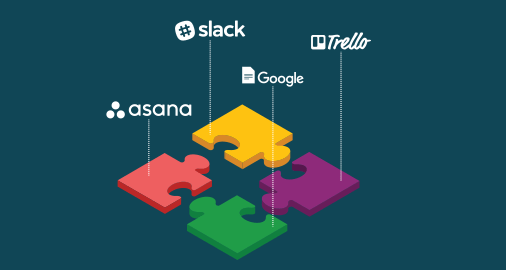Implementing new teams collaboration tools like Slack, Microsoft Teams or Asana promises benefits like better communication, improved transparency and more efficient workflows.
However, many organizations fall short in driving full user adoption. Without strategy and planning to onboard employees, your shiny new software risks becoming just another underutilized application.
This guide details key steps to ensure your team collaborates actively through the latest tools.
Don’t Underestimate Change Management
- Humans crave stability and normalcy, making us wired to resist change. A new collaboration platform – no matter how useful – interrupts ingrained behaviors.
- Lean on change management frameworks to facilitate adoption:
- Evangelize benefits through multiple channels
- Incentivize and reward usage
- Celebrate quick wins
- Continue building enthusiasm
With ongoing, positive messaging about how the software can make jobs easier, you override natural skepticism.
Schedule Mandatory Training Sessions
- Simply purchasing and deploying new collaboration tools does not guarantee productivity gains if employees don’t understand core functionality. Workers need hands-on learning opportunities to build confidence.
- Schedule required, in-depth training sessions to:
- Review essential features
- Set up user profiles
- Practice common use cases
- Allow collaborative trial runs
- Don’t assume staff will self-teach or figure things out on their own. Carve out dedicated hours for training at launch.
Define Rules of Engagement
Misunderstandings around governance and best practices can throttle adoption. Set clear guidelines covering:
- Intended use cases
- Data storage procedures
- Security protocols
- Etiquette expectations
Drafting policies removes uncertainty so employees use systems appropriately right away.
Assign Super Users
- Even after general training, some workers will require extra assistance. Issues like password resets or questions on advanced features often arise.
- Designate several “super users” across departments to provide:
- Tier-2 troubleshooting
- Workflow optimizations
- Ongoing informal training
- Leverage these experts to smooth adoption barriers whenever productivity bottlenecks occur.
Highlight Benefits Through an Internal Campaign
Employees need to not just understand, but value how the new software enhances their day-to-day experience. Craft compelling messaging around productivity perks through:
- Posters with stats/facts
- Lunch-and-learns
- Short video explainers
- Monthly newsletter content
Multi-channel communication nurtures buy-in at emotional and rational levels.
Additional Tips to Drive Adoption
Incentivize Activation Behaviors
Driving one-time login compliance differs greatly from cementing enduring engagement. Getting staff to fully incorporate tools requires rewarding repeat behaviors like:
- Completing 20 messages
- Hosting 3 video conferences
- Uploading 25 files
Offer individual prizes or team bonuses to motivate deeply ingrained usage beyond minimum activity levels.

Measure Metrics Rigorously
Quantitative data enables you to pinpoint adoption obstacles. Track key performance indicators around:
- Active users
- Messages sent
- Files accessed
- Group connections
Analyze for usage gaps across roles, teams and demographics. Then improve underperforming areas through additional encouragement mechanisms or training reinforcement.
Standardize Collaborative Workflows
- While collaboration platforms enable organic interactions, structured workflows solidify adoption.
- Document mandatory, step-by-step protocols for recurring project efforts:
- Client deliverables
- Product launches
- Performance reviews
- Content calendars
- Standardization, with the tooling to enhance the experience, makes usage unavoidable by centralizing all work execution.


